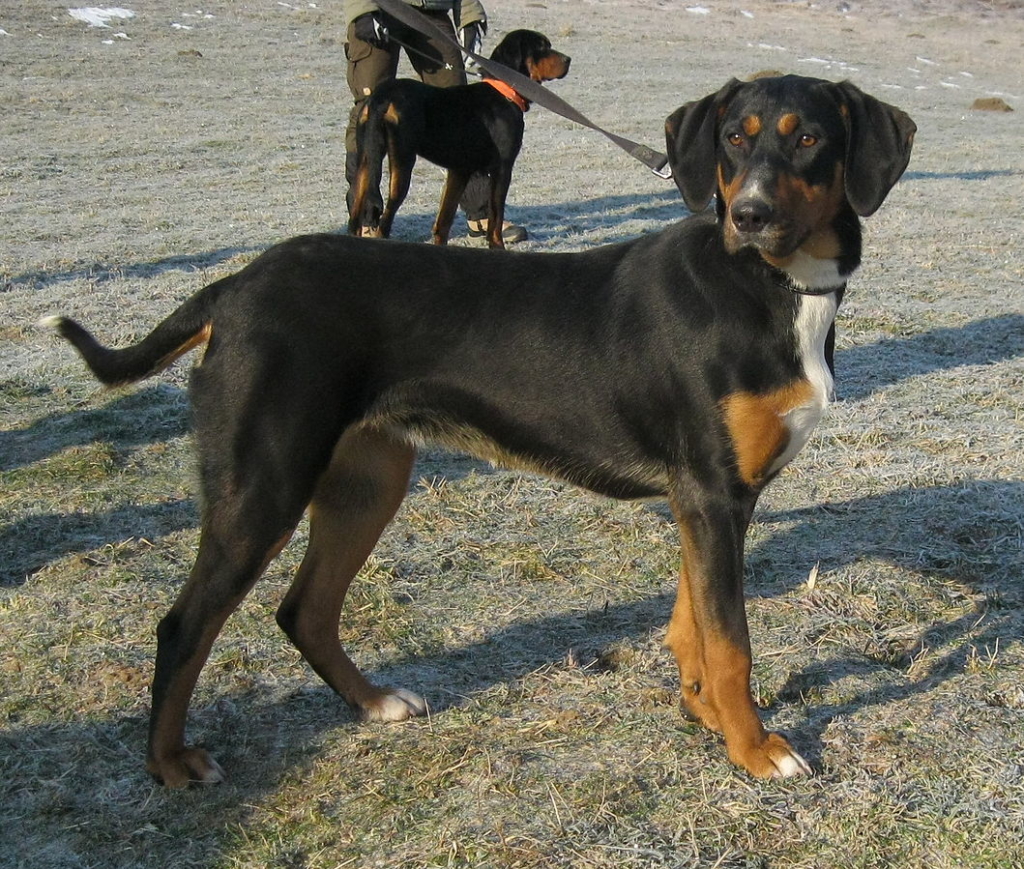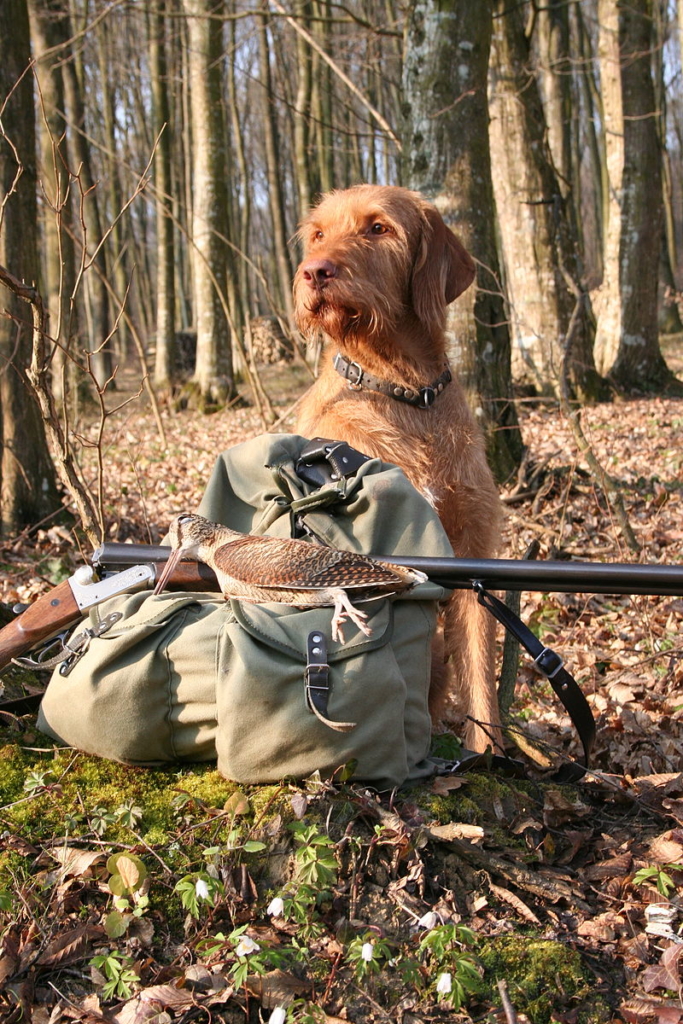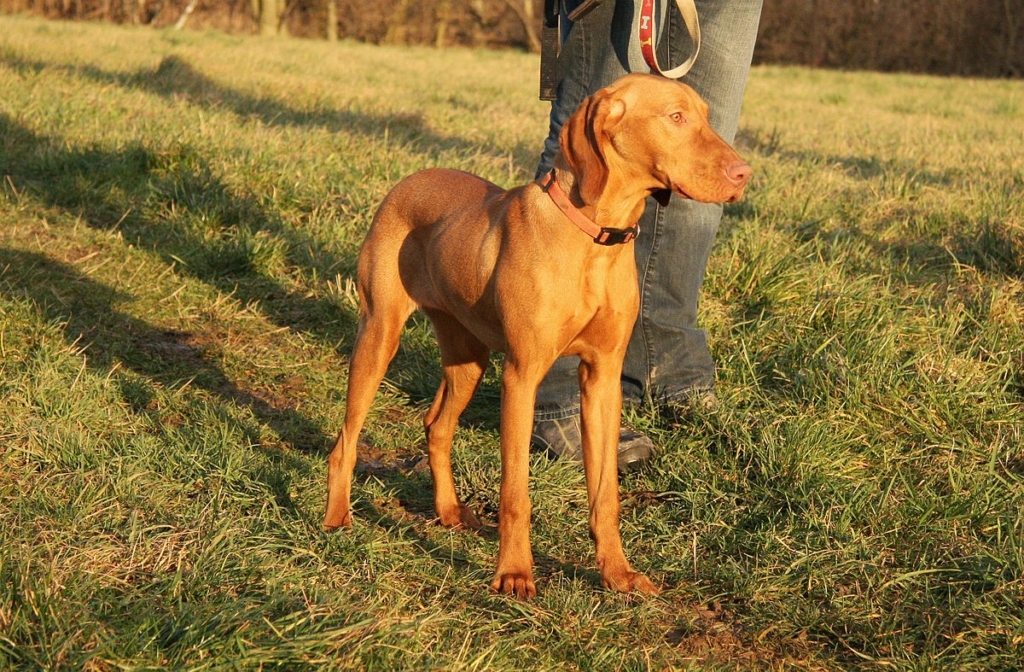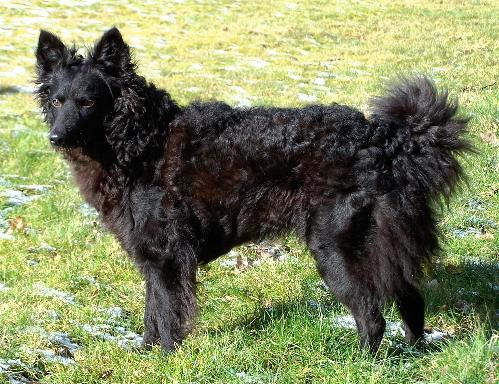Our loyal companions: 9 native Hungarian dog breeds

Dogs are widely considered a man’s best friend. They are presumably the first domesticated animals utilised for various purposes, such as hunting, guarding, herding livestock, or helping a person with disabilities. During the last 20,000−40,000 years, selective breeding resulted in a great diversity of dog breeds.
The Fédération Cynologique Internationale (FCI) distinguishes between 9 dog breeds that are officially registered as having Hungarian origin.
Erdélyi kopó (Transylvanian Scent Hound)

This medium-sized ancient Hungarian breed has been mainly utilised as a hunting dog; it is perfectly suited to the finding and pursuit of a trail. The breed’s peak occurred during the Middle Ages when it was widely used by the aristocracy. With the development of agriculture and forestry, the Erdélyi kopó started to decline, and it was marginalised to the woods and mountains. Two varieties can be distinguished: the long-legged (originally used for hunting big game, like bears and boars) and the short-legged Transylvanian hound (small game, like foxes and rabbits). The breed was rescued from extinction in the late 20th century.
The Erdélyi kopó has an athletic body with muscular limbs. Its primary colour is black with tan markings on the muzzle and legs. The breed’s coat is rather dense, coarse to the touch, and shiny. The Transylvanian Hound is often described as good-natured, courageous, and enduring.
Komondor

The Komondor has Asiatic origins and presumably arrived at the Carpathian Basin with the migrating Old Magyars. This large, white-coloured breed is utilised as a herding and livestock guarding dog. The Komondor’s most striking feature is its coat: its robust body is covered by matted, corded, long fur. The animal’s stature evokes respect and even fear. The breed’s temperament is mainly calm, but it has a natural guardian instinct, and it fearlessly defends the flock.
In 2004, along with several other protected native animal species, the Hungarian Parliament declared the Komondor a national treasure. In 2017, the Collection of Hungaricums was expanded with the Hungarian shepherd and hunting dog breeds, including this breed.
Kuvasz

The Kuvasz is a long-established, ancient Hungarian shepherd dog. Archaeologists argue that it arrived to the Carpathian Basin in the 9th century. This breed can work in harsh conditions, and the nomadic Magyar tribes used it to protect their livestock. It was also utilised as a bear and wolf hunting dog. During the 15th century, the Kuvasz became fashionable among the nobility, and King Matthias Corvinus was especially fond of them. According to Regi.tankonyvtar, in the middle of the 18th century, the guarding role of both the Komondor and the Kuvasz was mentioned in various ethnographic works.
Dogs of this breed are strong and large, embodying strength and tireless working ability. The Kuvasz is brave, intelligent, and intensely loyal. Its fur is moderately harsh, wavy, slightly stiff, unlikely to mat.
Magyar agár (Hungarian Greyhound)

The Magyar agár is a hunting dog that hunts the game by sight. It was bred for long-distance coursing. Based on archaeological evidence, the breed’s origin goes back to the time of the Hungarian conquest. Fast, tough, and robust, it is excellent on the racecourse. Somewhat reserved by nature but not shy, it is intelligent and loyal. This breed comes in a variety of colours. Its fur is typically short and dense.
Magyar vizsla (Hungarian Pointer)
The hound is considered to be the oldest Hungarian hunting dog, and the Hungarian vizsla evolved from this breed through crossbreeding in the 18th century.
Drótszőrű magyar vizsla (Hungarian Wirehaired Pointer)

The Hungarian Wirehaired Vizsla was created by crossbreeding the Hungarian Short-haired Vizsla with the German Wirehaired Pointer during the 1930s. It is a medium-sized pointing dog with an excellent nose, adaptability, and outstanding trainability. Vizslas have a lively and affectionate temperament, and they easily form close bonds with their owners. Dogs of this breed are robust but rather lightly built, their fur is wiry, strong, dense, and not glossy. The colour of the Hungarian vizsla ranges from russet gold to dark sandy gold.
Rövidszőrű magyar vizsla (Hungarian Short-haired Pointer)

The Hungarian Short-haired Vizsla is a versatile and efficient pointer dog, and its characteristics are similar to those of the Hungarian Wirehaired Vizsla. The first depictions and written evidence of the breed date back to the 13th century. The Hungarian Short-haired Vizsla was acknowledged as a separate breed by the Fédération Cynologique Internationale in 1935, and it is one of the most famous Hungarian dog breeds.
Mudi

The Mudi is a medium-sized herding dog, a great guard and companion dog, closely related to the Puli and Pumi. The breed was established during the 18th to the 19th century as the result of crossbreeding Hungarian herding dogs, most probably with various prick-eared German herding dogs. It is one of the rarest, least-known Hungarian breeds. The Mudi is an energetic, hard-working, and watchful dog with a lively temperament. Its fur is somewhat long and curly. The most striking part of this breed is probably its wedge-shaped head that always gives the impression of alertness.
Puli

Similarly to the Komondor, the Puli is a Hungarian herding breed of Asiatic origin. This medium-sized breed has been utilised for both herding and guarding livestock since it was introduced to the Carpathian Basin by the migrating Magyar tribes. It is characterised by great adaptability, eagerness, remarkable intelligence, and lively temperament. Pulis tend to be very friendly towards children. The strongly developed coat that tends to form curls and cords gives a unique appearance to the famous Hungarian breed. Its colour is primarily black, white, or grey.
Pumi

According to Pumiklub, the history of the breed can be traced back to the 17th−18th century. The Pumi evolved from the crossbreeding of Hungarian shepherd dogs and German and French terrier-like herding dogs. It was registered as a separate dog breed at the beginning of the 20th century. The Pumi is a small/medium-sized herding dog, similar to the Puli, with a lean and muscular body. The breed’s scenting ability is well developed, and it is an excellent companion and sporting dog. The Pumi is intelligent, lively, and agile. Its wavy, curly coat (usually black, white, or grey) forms tufts, and it is never smooth or corded.
- If you want more tips then an independent advisor will help you choose food for your dog.
Source:





